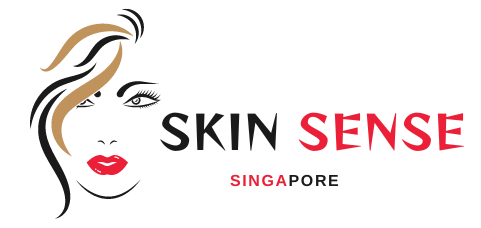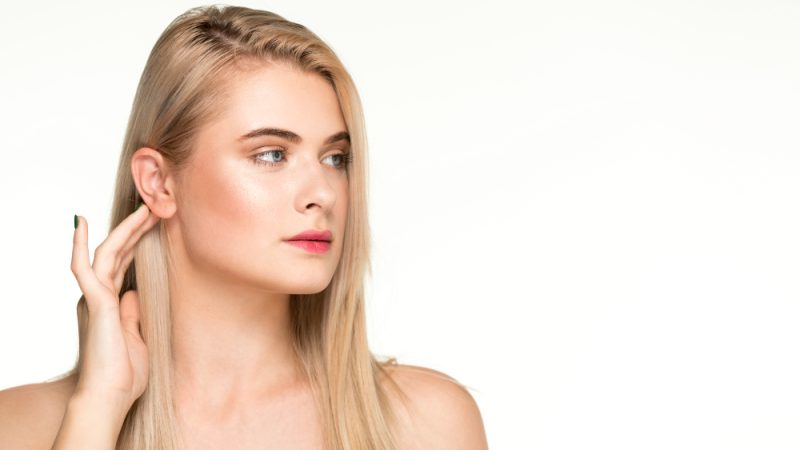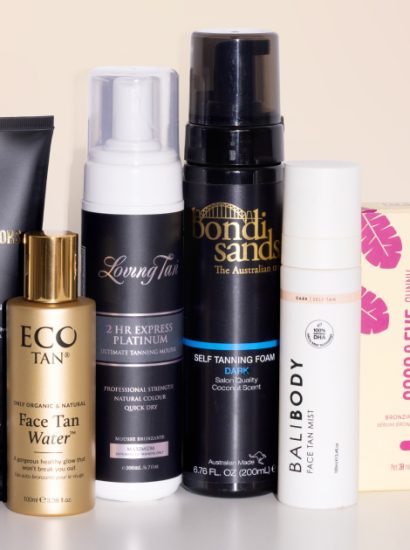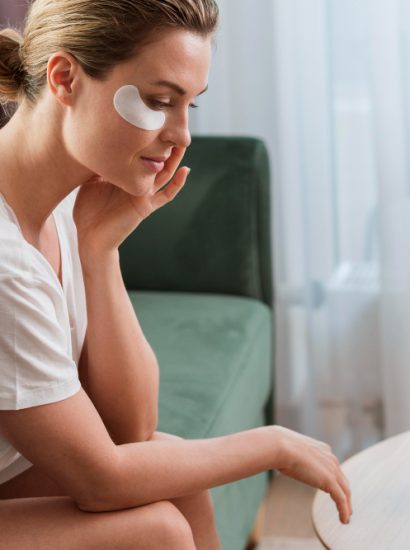Korean skincare has garnered a global following, known for its multi-step routines and commitment to achieving healthy, glowing skin. With a focus on hydration, nourishment, and protection, the Korean skincare routine emphasizes preventive care rather than just treating problems. In this article, we will explore the 10 essential steps of a Korean skincare routine and how each step contributes to radiant skin.
Korean Skincare Routine: Oil Cleanser
The first step in any Korean skincare routine is the oil cleanser. This step is crucial for effectively removing makeup, sunscreen, and excess oil from the skin. Oil cleansers work through a process called “like dissolves like,” where oil-based products dissolve makeup and sebum without stripping the skin of its natural oils.
To use an oil cleanser, apply a pump or two onto dry skin and gently massage it in circular motions. This helps dissolve impurities. Then, rinse with lukewarm water to emulsify the oil. Popular choices include Banila Co Clean It Zero and Heimish All Clean Balm, both of which are known for their effective formulations and pleasant textures.
Korean Skincare Routine: Water-Based Cleanser
Following the oil cleanser is the water-based cleanser, which removes any remaining impurities and prepares the skin for subsequent products. This step is vital for a thorough cleanse, ensuring that no residue from the oil cleanser remains on the skin.
Choose a gentle, hydrating water-based cleanser that suits your skin type. For oily skin, look for foaming cleansers that help control excess oil, while those with dry or sensitive skin may benefit from cream or gel cleansers that provide additional moisture. A few popular options are COSRX Low pH Good Morning Gel Cleanser and Innisfree Green Tea Foam Cleanser.
Exfoliator
Exfoliation is an essential part of the Korean skincare routine, typically done 1-3 times a week. Exfoliators help remove dead skin cells, unclog pores, and promote skin renewal, resulting in a smoother, brighter complexion. There are two main types of exfoliators: physical (scrubs) and chemical (AHAs and BHAs).
Physical exfoliators, like Neogen Bio-Peel Gauze Peeling Pads, provide immediate results but should be used with caution to avoid irritation. Chemical exfoliators, such as The Ordinary Glycolic Acid 7% Toning Solution, penetrate the skin more deeply, offering a more gentle approach. Choose the type that works best for your skin type and concerns.
Toner
After cleansing and exfoliating, the next step is to apply a toner. Toners help balance the skin’s pH levels, hydrate the skin, and prepare it for better absorption of subsequent products. Korean toners often contain hydrating ingredients like hyaluronic acid or botanical extracts to nourish the skin.
Look for a toner that suits your skin type. For example, those with oily skin may prefer a toner with astringent properties, while dry skin types should seek hydrating toners. Some popular options include Klairs Supple Preparation Facial Toner and Innisfree Green Tea Seed Skin.
Essence
The essence is a unique feature of the Korean skincare routine, acting as a bridge between the toner and serums. Essences are lightweight formulations packed with hydrating and skin-repairing ingredients, such as fermented extracts and antioxidants. They help improve skin texture, boost hydration, and prepare the skin for deeper treatment.
To use an essence, apply a few drops onto your palms and gently pat it into your skin, focusing on areas that need extra hydration. A highly recommended option is Missha Time Revolution First Treatment Essence, known for its nourishing properties and ability to promote a radiant complexion.
Serum
Next in the routine is the serum, a concentrated treatment designed to target specific skin concerns, such as hyperpigmentation, fine lines, or uneven texture. Serums often contain active ingredients like vitamins, peptides, and antioxidants that penetrate the skin deeply for maximum efficacy.
Choose a serum that aligns with your skin goals. For example, if you’re looking to brighten your complexion, consider a vitamin C serum like Klairs Freshly Juiced Vitamin C Serum. For anti-aging benefits, a hyaluronic acid serum or one containing retinol may be beneficial. Apply the serum evenly across your face and neck, allowing it to absorb fully before moving on to the next step.
Sheet Mask
Sheet masks are a beloved part of the Korean skincare routine, offering an easy and effective way to infuse the skin with moisture and nutrients. These pre-soaked masks are made of various materials, such as cotton or hydrogel, and are available in countless formulations to target different skin concerns.
Incorporate sheet masks into your routine 1-3 times a week after applying your serum. Simply place the mask on your face, relax for 15-20 minutes, and then remove it, gently patting the remaining essence into your skin. Popular options include Innisfree It’s Real Squeeze Mask and The Face Shop Real Nature Mask.
Eye Cream
The eye cream step is essential for targeting the delicate skin around the eyes, which is often prone to dryness, puffiness, and dark circles. Eye creams are specifically formulated to address these issues, offering hydration and additional benefits like firming and brightening.
When applying eye cream, use your ring finger to gently tap a small amount around the orbital bone, avoiding direct contact with the eyes. Look for ingredients like caffeine for puffiness and hyaluronic acid for hydration. Some popular eye creams include Etude House Moistfull Collagen Eye Cream and The Saem Urban Eco Harakeke Eye Cream.
Moisturizer
The moisturizer is a crucial step that locks in all the hydration and benefits from the previous steps, creating a barrier to prevent moisture loss. Depending on your skin type, you may prefer a lightweight gel moisturizer or a richer cream.
For oily skin, opt for a gel-based moisturizer like Neutrogena Hydro Boost Water Gel, which hydrates without clogging pores. For dry skin, a cream-based moisturizer such as COSRX Oil-Free Ultra-Moisturizing Lotion will provide extra nourishment. Apply the moisturizer evenly across your face and neck to ensure all areas are covered.
Sunscreen
The final step in the Korean skincare routine is sunscreen, an essential product for protecting your skin from harmful UV rays. Regular sunscreen application helps prevent premature aging, dark spots, and skin cancer. In Korea, sunscreen is considered a non-negotiable part of the daily routine, even on cloudy days.
Choose a broad-spectrum sunscreen with at least SPF 30 or higher. Gel-based formulas are excellent for oily skin, while cream-based options are better for dry skin types. Apply sunscreen generously to your face, neck, and any exposed areas at least 15 minutes before sun exposure. Some popular choices include Missha All Around Safe Block Essence Sun Milk and Etude House Sunprise Mild Airy Finish Sun Milk.
Conclusion
Following the 10-step Korean skincare routine can transform your skin, helping you achieve a radiant, healthy complexion. While the routine may seem extensive, each step serves a purpose, ensuring that your skin is well-cleansed, hydrated, and protected. Remember that consistency is key; it may take time to see significant results, but your skin will thank you for the effort. By incorporating these steps into your daily skincare regimen, you can enjoy the benefits of Korean skincare and achieve the glowing skin you’ve always desired.
FAQs
1. Is the Korean skincare routine suitable for all skin types?
Yes, the Korean skincare routine can be adapted to suit various skin types, including oily, dry, combination, and sensitive skin. It’s essential to choose products tailored to your specific skin concerns.
2. How often should I exfoliate my skin?
Exfoliation should be done 1-3 times a week, depending on your skin type. Those with sensitive skin should stick to once a week, while those with oily skin may benefit from more frequent exfoliation.
3. Can I skip any steps in the Korean skincare routine?
While the full 10-step routine is beneficial, you can customize it based on your needs. If you’re short on time, focus on the essential steps: cleansing, toning, moisturizing, and sunscreen.
4. What if I have sensitive skin?
If you have sensitive skin, choose gentle, fragrance-free products and avoid using exfoliators too frequently. Always patch test new products before incorporating them into your routine.
5. How long does it take to see results from a Korean skincare routine?
Results can vary based on individual skin types and concerns. Generally, you may start seeing improvements in your skin’s texture and hydration within a few weeks, while significant changes may take several months of consistent use.
Also read: Neogen Skincare: 10 MustTry Products for Radiant Skin





